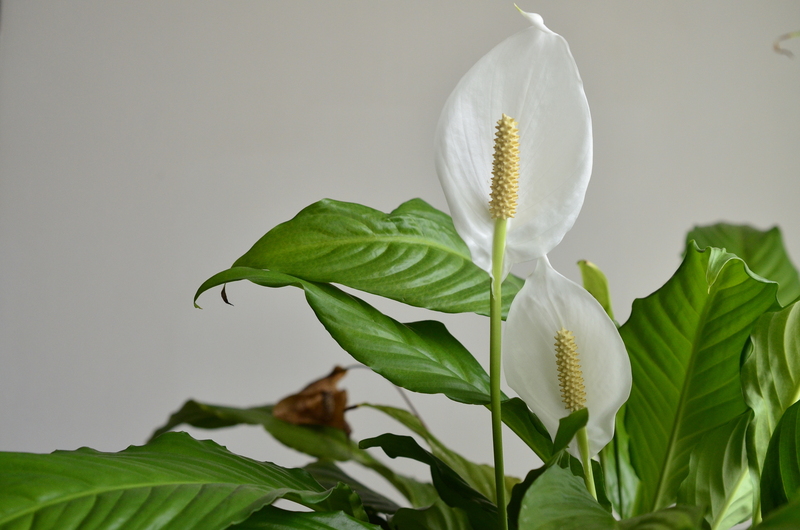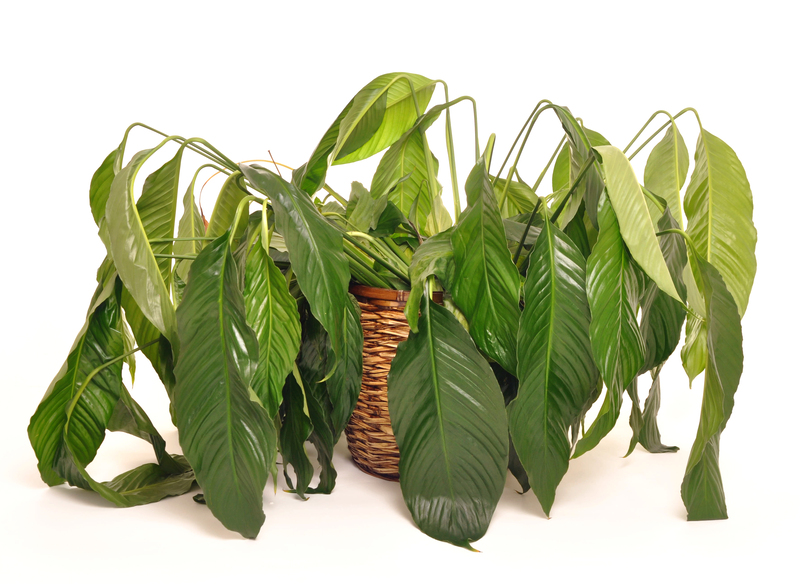Keeping Your Garden Plants Safe During Harsh Winter
Posted on 27/05/2025
Keeping Your Garden Plants Safe During Harsh Winter
As the temperatures plummet and frost begins to settle, gardeners face the crucial challenge of protecting their precious plants during harsh winter months. Whether you're an experienced green thumb or a budding enthusiast, safeguarding your winter garden is essential for ensuring your plants emerge healthy and vibrant when spring returns. In this comprehensive guide, we'll explore proven methods and practical tips for keeping your outdoor plants safe during a harsh winter.

Why Is Winter Protection for Garden Plants Essential?
Winter can be tough on your garden. Prolonged freezing, snow, or even chilling winds can cause significant plant damage. The main threats to garden plants in winter include:
- Frost causing cell rupture in stems and leaves
- Desiccation from cold, dry winds
- Heaving due to repeated freeze-thaw cycles, which can uproot shallow-rooted plants
- Snow weight breaking branches or flattening delicate perennials
- Root damage when soil temperatures plunge
These challenges make winter plant protection an imperative step for every gardener. With the right strategies, you can minimize loss and encourage lush regrowth in the spring.
1. Understand Your Garden's Microclimate
Every garden is unique, shaped by its location, exposure, and even the types of plants you grow. Recognizing the microclimate of your property is key. For instance, north-facing gardens receive less sun and may stay frozen longer, while areas next to buildings can be warmer and shielded from wind.
- Observe which spots frost lingers the longest.
- Note wind directions and natural shelter provided by structures or trees.
- Choose hardier plants for exposed areas, while more delicate specimens can be placed in protected spots.
Understanding these patterns helps you plan effective winter protections and make wise choices about plant placement.
2. Choose Winter-Hardy Plants and Varieties
Not all garden plants are created equal when it comes to freezing temperatures. The best long-term strategy for keeping your garden safe in winter is plant selection.
- Consult your regional USDA Hardiness Zone or local equivalents to select species and cultivars proven to survive winters in your area.
- Opt for native plants--they're generally more resilient to local weather extremes.
- For non-hardy favorites (like some roses, citrus, or tender perennials), plan extra protection or overwintering indoors.
With the right foundation, you'll have fewer worries about severe winter damage.
3. Prepare Plants Before Winter Sets In
Thorough Garden Cleanup
Start with a general clean-up. Remove diseased foliage, spent annuals, and rotten fruits that can harbor pests or fungus over winter.
Pruning
Prune dead or damaged branches in late autumn, but avoid heavy pruning right before winter, as this can stimulate new, frost-sensitive growth. Wait until plants are fully dormant.
Feeding and Watering
Continue to water your garden deeply into late fall, especially during dry spells. Mulch retains soil moisture and moderates root temperature. Avoid heavy fertilization--excess nitrogen can encourage tender growth susceptible to frost.
4. Use Mulch to Insulate Root Zones
Mulching is one of the best ways to protect garden plants in harsh winter. A thick layer of mulch acts as an insulator, keeping soil temperatures more stable and preventing frequent freeze-thaw cycles that damage roots.
- Apply 2-4 inches of organic mulch (like shredded leaves, straw, or wood chips) around perennials, shrubs, and trees.
- Keep mulch a few inches away from stems and trunks to prevent rot.
- For extra vulnerable plants, mound up mulch higher to shield crowns and roots.
Fresh mulch application in late fall, just before the ground freezes, offers the most effective winter insulation.
5. Shield Plants from Wind and Snow Damage
Windbreaks and Barriers
Strong, cold winter winds can dehydrate and damage vulnerable plants. Set up windbreaks using:
- Temporary fences of burlap, canvas, or even snow fencing.
- Planting evergreen shrubs as living shelters on the windward side.
- Large overturned pots, buckets, or cloches for individual tender plants.
Protecting from Snow Load
Heavy, wet snow can snap branches and collapse upright herbaceous perennials. Protect them by:
- Gently brushing off snow accumulations after each snowfall.
- Using stakes or cages to support tall or weak stems.
- Wrapping sensitive shrubs in burlap or garden fleece.
These targeted methods will go a long way in keeping your garden plants safe during winter storms.
6. Overwintering Tender Plants Indoors
Some plants, particularly tropicals, annuals, or half-hardy perennials, won't survive even brief exposure to freezing temperatures. For these, overwintering indoors is a must.
- Dig up and pot tender bulbs, tubers, and plants like dahlias, cannas, geraniums, or begonias before the first hard frost.
- Store bulbs in cool (but frost-free), dark, dry places with good air circulation.
- For container plants, move them to a garage, basement, porch, or inside a cool room with adequate light.
- Reduce watering during dormancy, but prevent total dryness to protect roots.
Mark each plant with a label so you can easily place them back in the garden once spring arrives.
7. Caring for Evergreens Throughout Winter
Evergreen trees and shrubs add beauty and structure to winter gardens--but they're at risk for winter burn, a condition caused by dehydration when roots can't absorb water from frozen soil.
- Water evergreens deeply until the ground fully freezes.
- Mulch around their base to retain moisture and buffer soil temperature.
- Spray antidesiccant or apply burlap wraps to reduce needle and leaf moisture loss.
- Consider staking young trees to protect against windrock (loosening of the roots).
8. DIY Plant Covers and Cloches
Homemade covers can be quick and cost-effective ways of protecting garden plants during severe cold snaps:
- Frost cloths, old sheets, or blankets draped over plants provide overnight protection (remove during the day).
- Plastic containers, buckets, or milk jugs (with the bottom cut out) serve as mini-greenhouses for young plants or seedlings.
- For rows of crops or larger beds, build simple hoop tunnels using PVC or wire frames and heavy-duty plastic covers.
Don't let covers touch plant foliage directly, as this can sometimes cause freeze damage. Anchor covers securely to prevent wind from blowing them away.
9. Monitor Potted Plants and Raised Beds
Container plants and raised beds freeze much faster than garden soil, exposing roots to harsh conditions.
- Move pots into sheltered spots (against house walls, in unheated garages, or under decks).
- Cluster pots together for added warmth, and wrap containers with burlap, bubble wrap, or old towels to insulate them.
- Elevate pots off the ground to improve drainage and prevent waterlogging followed by root rot.
- For raised beds, apply extra mulch and consider row covers on the coldest nights.
10. Snow as an Insulator: Friend or Foe?
It might surprise you to learn that snow can be both a protector and a hazard for your garden.
- A blanket of snow insulates the soil, maintaining a more stable temperature and reducing the risk of freeze-thaw cycles.
- However, repeated thawing and refreezing at the snow's edges can stress certain plants or expose them if the snow slides off unevenly.
Where feasible, let snow cover your sleeping beds and perennials--but gently brush it away from delicate shrubs and evergreens if it becomes too heavy.
11. Monitor and Respond to Weather Changes
Stay vigilant throughout the winter. Early detection of sudden temperature drops or prolonged freezes means you can put emergency measures in place, such as:
- Adding extra layers of mulch or covers just before an arctic blast.
- Heaping up soil or compost around vulnerable crowns.
- Watering soil during mid-winter thaws (if the ground isn't frozen) to prevent desiccation.
12. Avoid Common Winter Plant Protection Mistakes
- Do not overwater--waterlogged roots rot quickly in cold climates.
- Avoid rapid freeze/thaw exposure--increase insulation where possible.
- Don't fertilize late in the season--this encourages new, frost-sensitive growth.
- Never use plastic directly on plants overnight--it can trap condensation and freeze foliage to the surface.
By steering clear of these pitfalls, you'll boost your chances of healthy garden survival through the coldest winter months.

13. Planning Ahead for Year-Round Garden Success
Aside from seasonal protection, thoughtful long-term planning is invaluable for winter plant safety:
- Plant trees and large shrubs in the right spots for natural wind protection.
- Space plants to allow airflow and sunlight for fast drying after snow or rain.
- Keep pathways clear to easily access garden beds for seasonal maintenance.
- Create diverse plantings--some plants may be lost, but others will thrive, ensuring year-round garden interest.
Conclusion: Protecting Your Garden During Harsh Winters Pays Off
The task of keeping your garden plants safe during harsh winters can feel daunting, but armed with these practical tips and a bit of vigilance, you can minimize losses and keep your garden thriving year after year. Remember, the key is preparation, monitoring, and quick response to changing conditions.
Embrace the winter months as an opportunity to observe and improve your garden's resilience. When spring arrives, your healthy, vibrant plants will be a testament to all your behind-the-scenes work during the colder season.
For optimal winter plant protection, start early, stay informed, and customize your care to each plant's needs. Whether through mulching, covering, or strategic overwintering, your garden will reward you for every ounce of effort invested now.
FAQs - Keeping Your Garden Plants Safe During Harsh Winter
- Q: What is the best mulch for insulating garden plants in winter?
A: Organic mulches like shredded leaves, straw, or pine needles provide excellent insulation and slowly enrich the soil as they decompose. - Q: How can I prevent windburn on my evergreens?
A: Use windbreaks of burlap or apply antidesiccant sprays to reduce water loss through leaves and needles. - Q: Should I water my garden during winter?
A: Water deeply before the ground freezes. During dry, mild spells, you may need to water evergreens if the soil hasn't frozen solid.
If you found this guide helpful, share it with fellow gardeners and help everyone enjoy a beautiful, resilient garden come spring!

